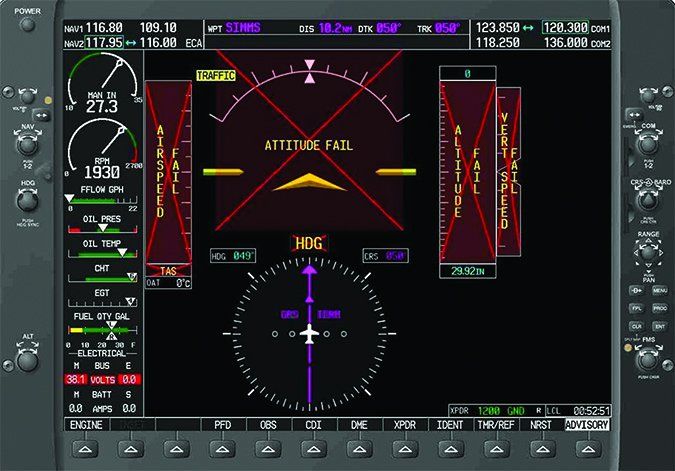You may think your avionics stack is not a safety-critical system because it often is perfectly legal to fly without it. But once you turn on a radio, it becomes an integral part of your aeronautical decision making. Most of the time, thankfully, everything works. But stuff does happen, and things do break or don’t work as they should. Many failures can be caused by interactions between the various pieces of equipment installed in your panel, or by devices you and your passengers brought aboard.
Radiofrequency interference, RFI, can disrupt navigational signals, causing VOR/LOC needles to inaccurately drift or your GPS to generate an error. Some failures are obvious, but some are insidious and pilots may not have full knowledge of the problem, what’s causing it and, most important, how to fix it, at least temporarily. The only thing worse than no radio is a half a radio, i.e., one that works well enough to dupe you into using it even though its broadcasts are unreadable or its signals unreliable. I recently learned more about these kinds of problems than I ever wanted, thanks to an avionics upgrade.
RFI and GPS
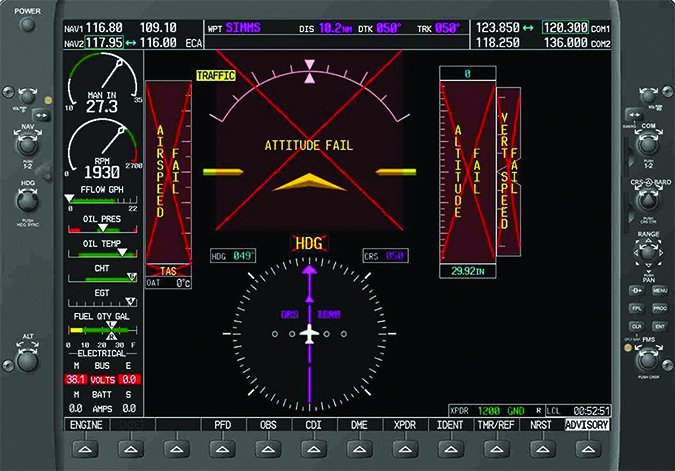
After my avionics were installed, I was excited to be flying with a new GPS. It soon was time for the IFR certification check to confirm my altimeter and transponder were in working harmony and all the newly installed avionics were up to IFR snuff.
I dropped the plane off at the avionics shop, grabbed the courtesy car and headed out for lunch. When I got back to the shop a few hours later, there was a problem. My newly installed GPS navigator would lose signal when the radios were keyed at or near 121.5 MHz.
The root of the problem turned out to be antennas. The GPS antenna and the old 121.5 ELT antenna were interacting to create some bad juju. The upshot was transmissions on the new box would knock out my WAAS GPS reception, causing it to lose the navigation signal. Argh.
There was good news, though. I learned that upgrading my old 121.5 MHz ELT to the newer 406 MHz standard usually resolves the problem. And it turned out an ELT upgrade wasn’t that expensive. I worked with my mechanic to install a new ELT and the spiffy little remote on/off/test/alarm switch. After all the installation tasks were completed, I went back to the avionics shop for a retest and IFR certification. The GPS remained active across all frequencies and all was right with the world for the IFR certification. Life was good…or so it seemed.
RFI and the ELT
On my way back home, I decided to pick up flight following from ATC. I keyed the mic and the ELT went off. Holy cow! That thing is loud! I pressed the reset button and things quieted down. I decided to contact ATC again to let them know I had a false ELT alarm and it came blaring on again. This time, it couldn’t be reset. I eventually discovered that pushing the reset and test button would kill the blare in my headset, which in turn allowed me to tell Center I did not have an emergency and did not need assistance.
I then switched to the CTAF at the nearest airport and called in my intention to land. I listened for traffic, but pressing the two buttons was not something I could do indefinitely. With the din of the ELT in my ear, hearing anything useful was nearly impossible. Fortunately, it was a quiet airport and I was able to land, hop out of the plane and reset the ELT. I telephoned ATC and the Air Force Rescue Coordination Center at Tyndall AFB in Florida to let everyone know I had no emergency, just a false alarm. And then I called the avionics shop.
The diagnosis they gave for my description of symptoms was similar to the GPS issue. In this case, the telephone wire used to connect the ELT to the remote switch must have been run too close to the coaxial cable that carries transmission energy to the antenna. The resonating radiofrequency (RF) energy in the phone wires was being interpreted by the ELT as a signal to transmit. Unhooking my spiffy remote switch solved the problem temporarily, but a new routing of the phone wire used for the ELT remote switch would be required. Interestingly, this issue did not occur during ground testing. This is the fickle nature of RFI.
EM Radiation and RFI
To better understand how RFI can affect our avionics, we need to know some basic things about electromagnetic radiation and radio frequencies themselves. Electromagnetic radiation is basically a form of light. Modern electrical and communications technologies depend on the ways that electrical and magnetic fields are generated and altered by each other, and by charges and currents. Some very clever folks have learned to exploit the wave phenomena to send and receive encoded information that we pilots have become quite dependent on, both for navigation and communication.
The frequencies used by avionics systems range from a few kilohertz to several gigahertz, with each range used for specific applications. Starting at the low end, ground-based NDBs—if you can find one these days—operate below the AM radio band. The more ubiquitous VHF omnidirectional range (VOR) station operates just above the FM band, from 108.0-117.9 MHz. Communication transceivers operate just above the VORs, from 118.0-135.9 MHz. Glideslope systems use the 328-335 MHz range and distance-measuring equipment (DME) operate at just over 1 GHz. Global positioning system (GPS) uses two main frequencies above 1 GHz, the L1 frequency of 1.57542 GHz, and the L2 frequency at 1.22760 GHz. The frequencies used for collision avoidance and cockpit weather radar systems also are above 1 GHz.
Electromagnetic interference (EMI) is simply the presence of unwanted signals from devices that are emitting radiation at the same frequency our avionic equipment is trying to use. When EMI is in the radio portion of the spectrum, it’s called radiofrequency interference.
One source of RFI is the system itself. According to Ampere’s law, an electric current also produces a magnetic field that can be visualized as a pattern of circular field lines around the wire. This field persists as long as there is current present. When an electric current flows in a suitably shaped conductor at radio frequencies, radio waves can be generated.
Sometimes, our aircraft’s wiring can radiate EMI in the radiofrequency spectrum. Similarly, wiring runs can themselves become antennas, converting received radio energy into electrical potential. An RF signal also can resonate at a specific frequency and produce harmonic frequencies above and below the main signal. These harmonics can often land within the range of frequencies used to drive needles on instruments or the channels we transmit and receive.
Certified aircraft radios are equipped with signal-filtering features designed to suppress or eliminate unwanted interferences. Avionics are designed with both filtering and digital signal processing (DSP) that minimize or eliminate RFI. The airframe and engine are also designed with requirements that minimize or eliminate unwanted RF signals.
RFI, PEDs and Avionics
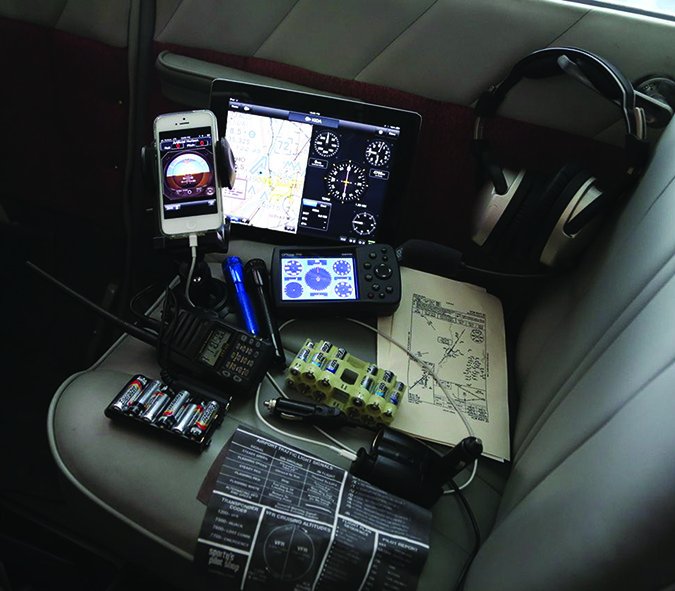
In 1993, an airline flight from Denver to Newark lost its directional gyro at cruise altitude. The captain instructed the flight attendant to tell passengers to turn off electronic devices. About 25 passengers with portable radios had been listening to a Denver Broncos playoff game. With radios off, the gyros came back on line. Several Bronco fans, however, covertly resumed using their radios and again the malfunction returned. The radio devices were confiscated.
More recently, NASA’s Aviation Safety Reporting Service (ASRS) continues accumulating reports of airborne avionics issues circumstances indicate were caused by radiofrequency interference. The July 31, 2015, ASRS sampling of reports referencing passenger electronic device-related incidents included:
– “B737 Captain reported possible interference from cell phones in the cabin that could account for the electronic anomalies they were experiencing during the flight.”
– “B767 flight crew reported deviating from ILS course and altitude on approach to SPIM because of an autopilot error, possibly caused by passenger cell phone use.”
– Air Carrier Captain experiences localizer oscillations during approach in VMC that he suspects may have been caused by an electronic device.”
– “CRJ-200 Captain experiences interference in his Bose X headset possibly caused by a cell phone.”
Minimizing RFI is Your Job
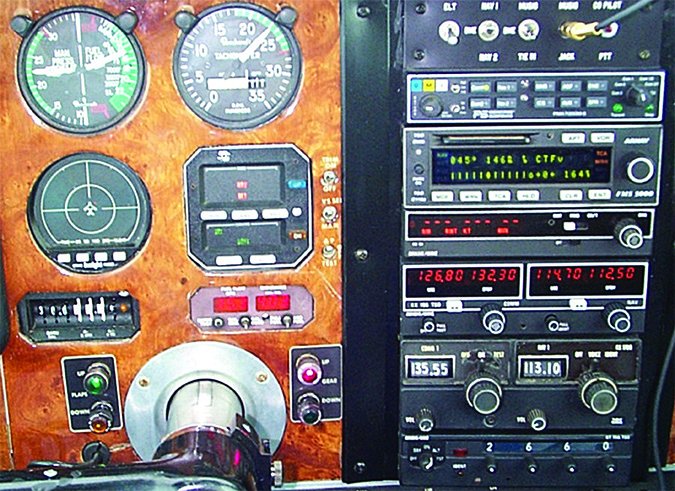
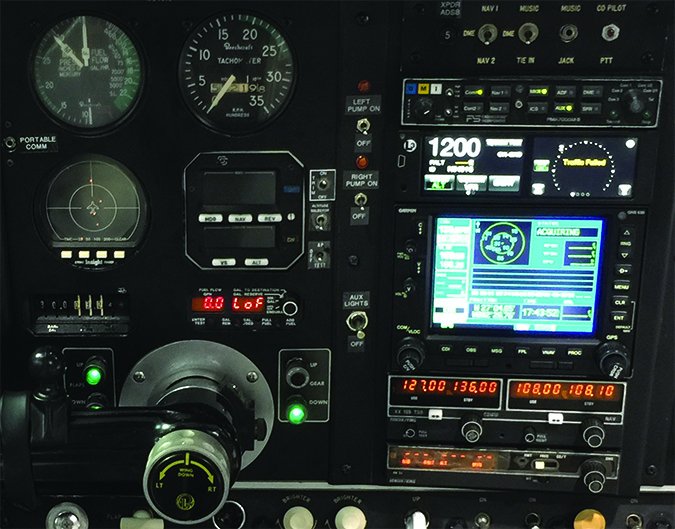
It is the PIC’s responsibility to have more than hope that RFI won’t affect the safety of flight. Older aircraft with a long history of avionics swaps are at higher risk than new aircraft off the factory floor. The more you know about electromagnetic interference (EMI) will help you understand, recognize and hopefully eliminate it from your flight safety profile.
If you are flying a plane with a complicated history of avionics installations and a lot of noise in the system, you should be suspicious that its navigational systems are subject to RFI. Being overly trusting could create the first link in a potential accident chain.
I have learned firsthand that RF interference can be more than just a buzz in the headset. It is serious business and can affect safety of flight in novel and unexpected ways. I have also learned how hard it is to stay focused with a blaring ELT, and having a nav/com setup that knocks out the GPS is simply unacceptable.
It is easy to think that our portable electronics and devices are safe because they have never caused problems in the past, but remember this: Every aircraft and gadget combination creates its own unique risk profile. The more gadgets you add, the more potential there is for them to interact with flight systems. The time to verify systems is at zero knots groundspeed and 1G. Every untested gadget creates at least one other potential link in the risk chain. While you can presume they won’t interact, it’s better to confirm.
Avionics Troubleshooting Tips for Pilots
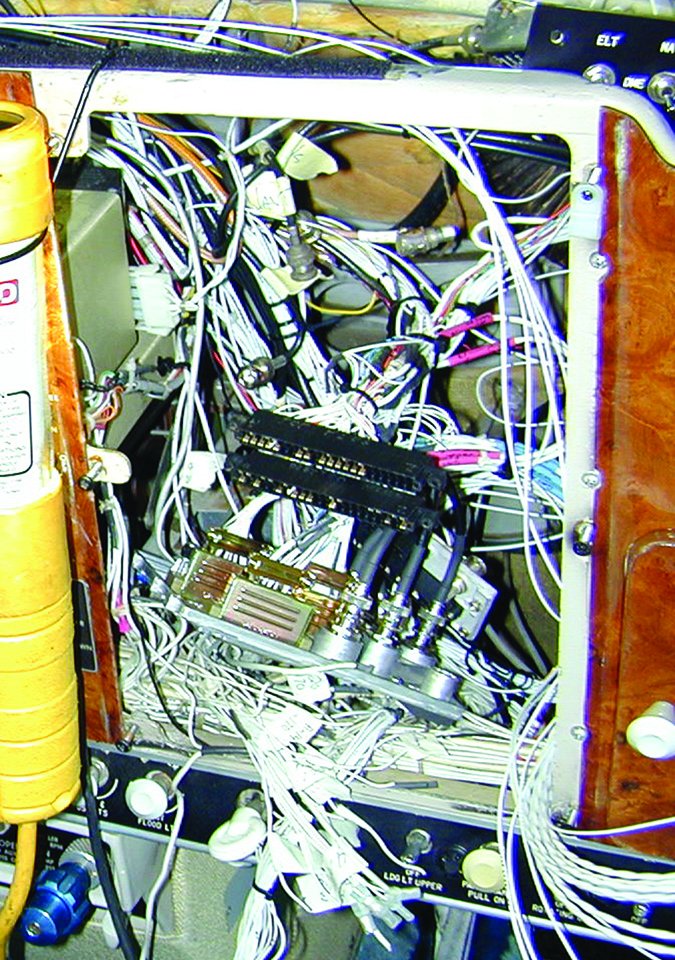
– Fully understand the system components, and the other devices and systems they depend on before trying to diagnose any gremlins.
– Be sure the problem equipment is getting power. Someone we know but will not name flew the same audio panel for 10 years and hundreds of hours before learning the hard way that it had a power switch.
– Don’t perform detailed diagnostics while airborne unless it’s a test flight and someone else is doing the testing while you fly.
– Before disabling a system, evaluate whether you may need it to land at your destination, and whether you can power it up again if necessary.
– You only get one circuit breaker reset. If it pops again, leave the breaker open and consider the equipment failed until someone who knows what they’re doing can look at it.
– If all else fails, power down and disconnect from ship’s power any PEDs that may be on board.
Preventing RFI
Proper avionics installation will help ensure your equipment is protected from RFI. One of the many pathways for RFI to enter the avionics system is via an unprotected, poorly grounded or RFI-sensitive antenna. Aircraft with navigation and communication antennas located outside the skin of the aircraft can pick up EMI radiated through windows and other unshielded openings in the plane.
You don’t want that noise to interfere with the navigation receiver, autopilot or other critical avionic device. Effective shielding of avionic cabling protects against both interfering emission and reception, and eliminates the signals or reduces potential entry points. All certified avionic equipment and cabling used for aircraft are specifically designed to shield against RFI.
Unfortunately, not everything works the way it should. Sometimes things are installed incorrectly and, like it or not, the wiring and grounding in our systems is prone to corrosion and aging, resulting in systems that are increasingly vulnerable to RFI. Incremental avionics swaps also take their toll, leaving each airframe uniquely susceptible to RFI issues based on its maintenance and upgrade history.
In my case, I get a distinctive buzz in my headset when I flip the alternator switch on, and I get additional patterned noise when I turn on my strobes. Both of these additional levels of RFI are within tolerance, but as my aircraft ages and avionic components are added and removed, I could expect my RFI levels to accumulate in the avionics system much like ice accumulates on the airframe.
Gadget Interactions
Another problem these days is the increasing interaction of gadgets with our avionics. I definitely remember the distinct systematic clicking and buzzing in my headset caused by my first cell phone.
If you hear RFI and determine it is induced by any of your devices, you should seriously stop, question and ground check whether the added gadgets are affecting other instruments. You don’t want to find out the glideslope is affected by your power adapter while shooting an ILS to minimums.
Personal electronic devices (PEDs), like computers, phones, Bluetooth, etc., operate at frequencies between 10 KHz and up to 400 MHz for laptop computers and in the GHz range for wifi and Bluetooth signals. When the harmonics of these signals are taken into account, the emitted frequencies cover almost the entire range of navigation and communication frequencies used on the aircraft.
In other words, the interactions of all the gadgetry we tend to use and plug in puts our avionic systems at increased risk of RFI. In fact, the only airplanes we know of that aren’t susceptible to avionics gremlins are those lacking avionics. As our airframes and their wiring get older, RFI is more and more likely to create hard-to-identify problems.
Mike Hart is an Idaho-based commercial/IFR pilot, and proud owner of a 1946 Piper J3 Cub and a Cessna 180. He is also the Idaho liaison to the Recreational Aviation Foundation.

